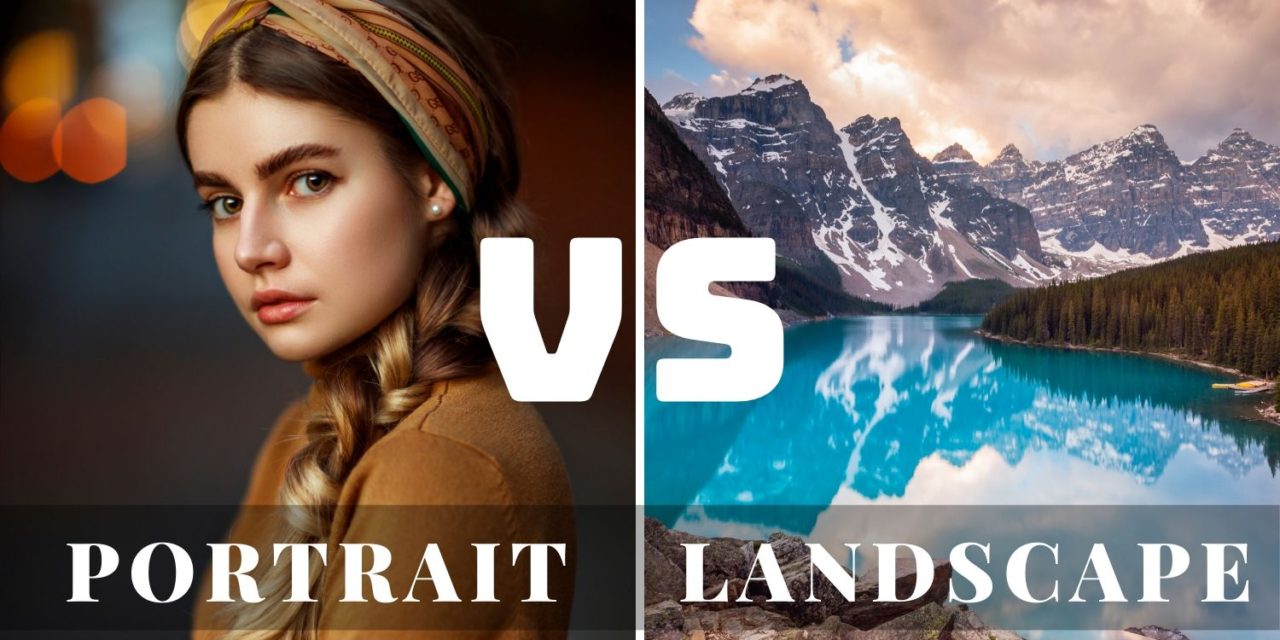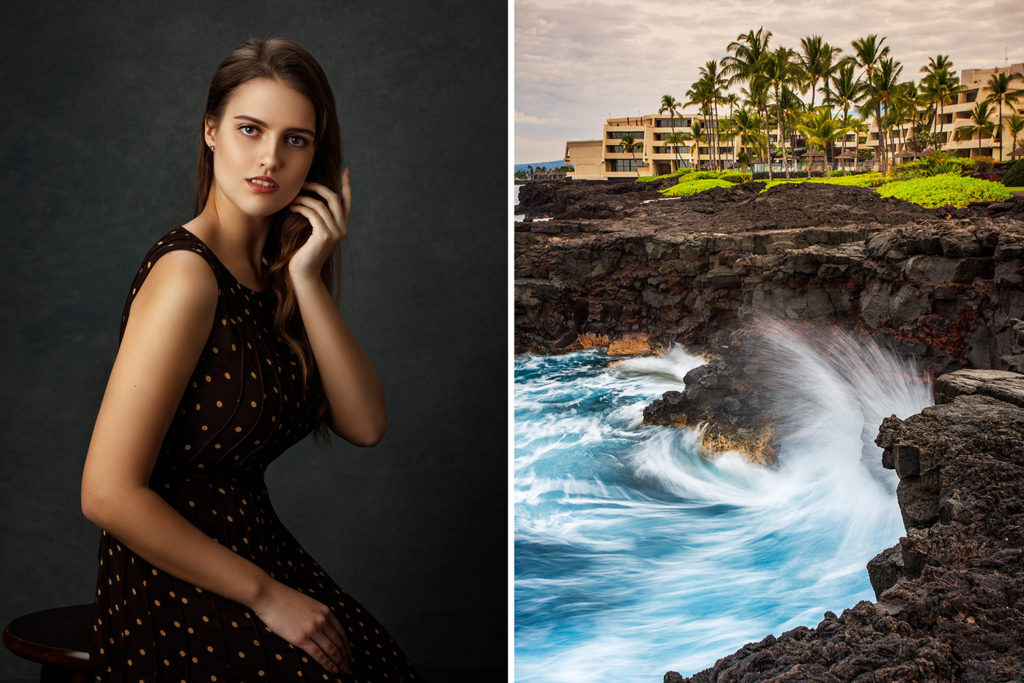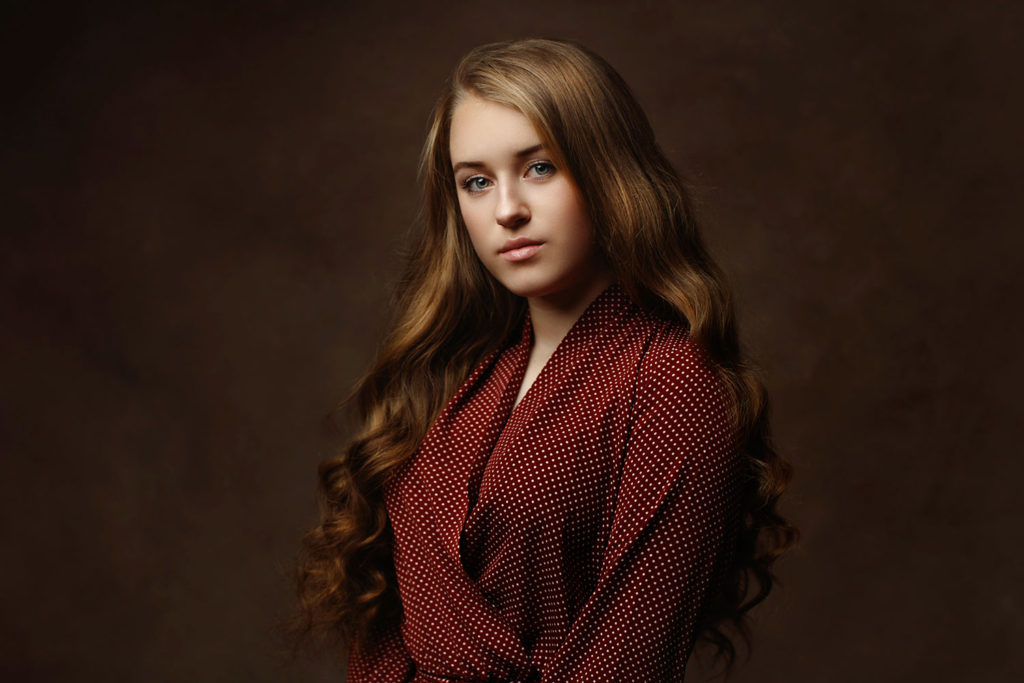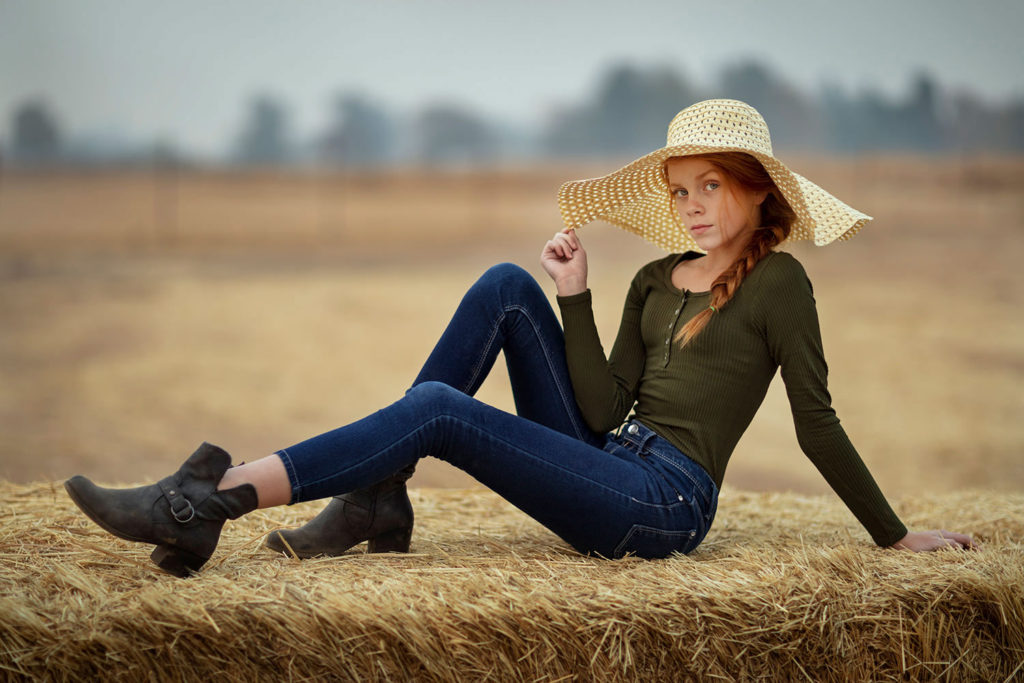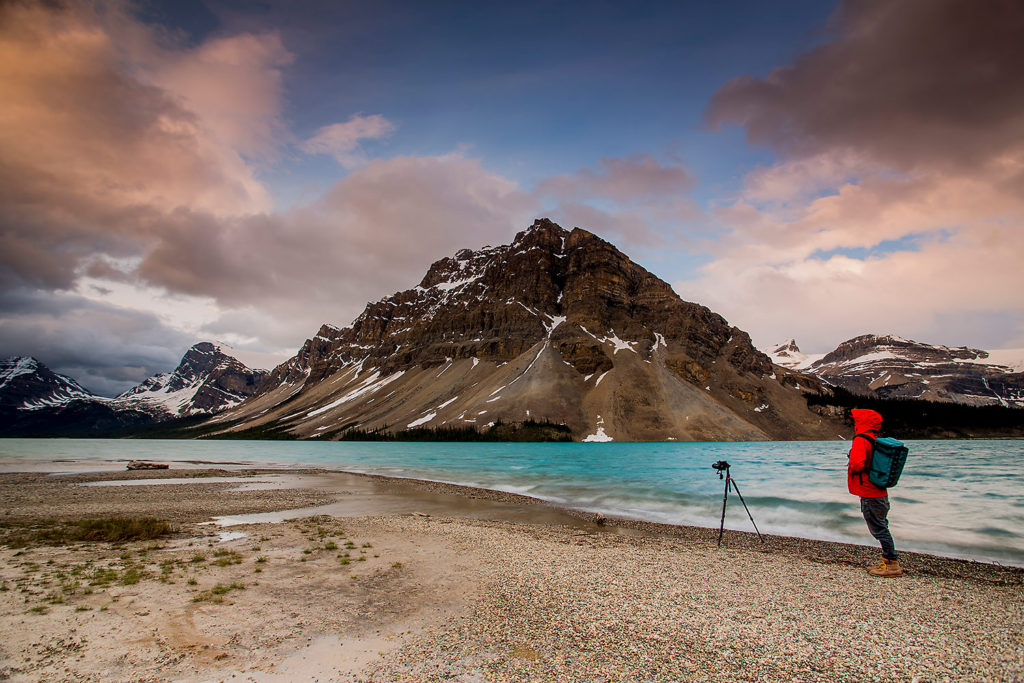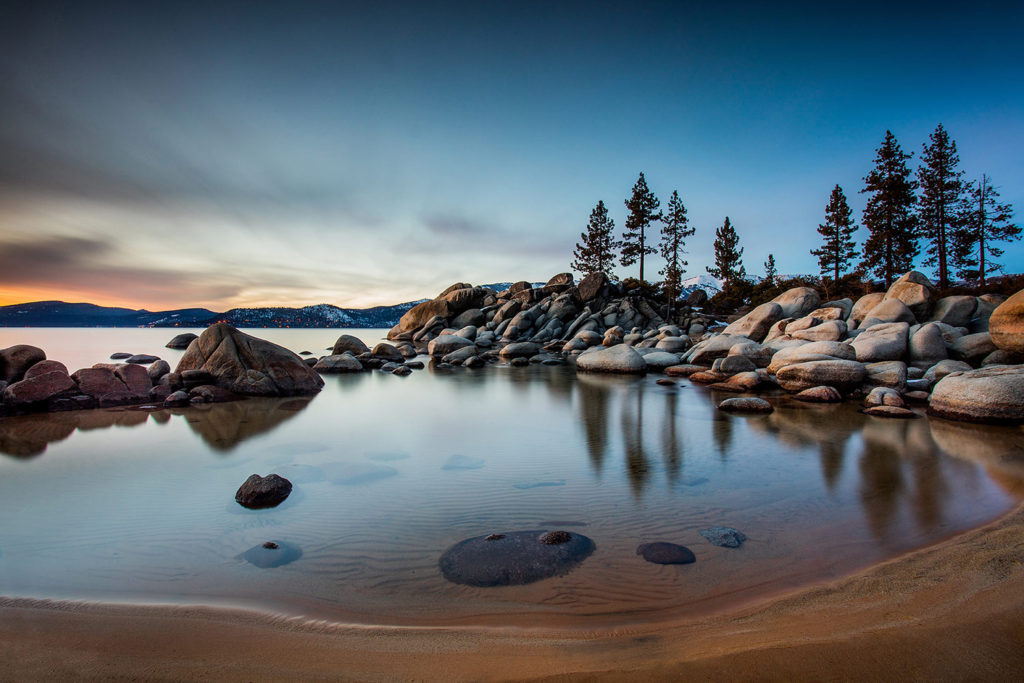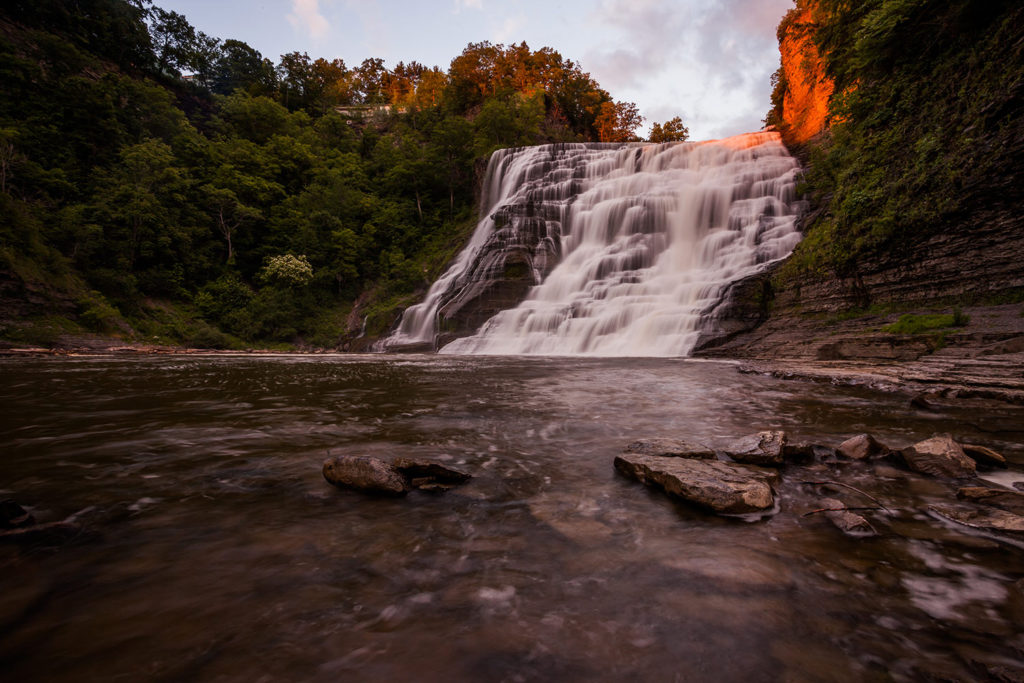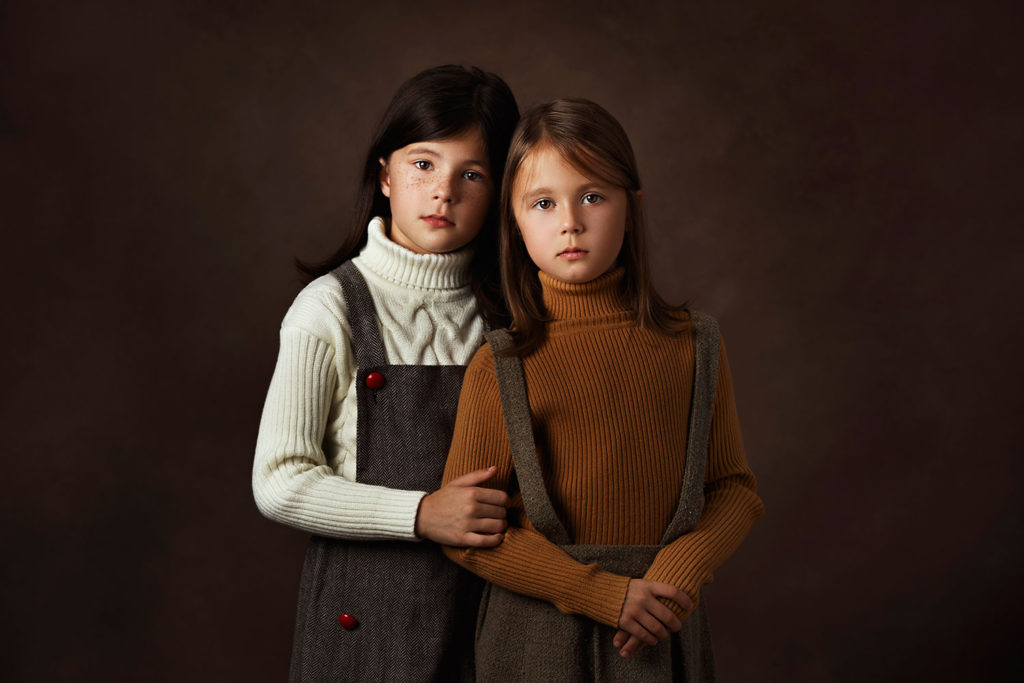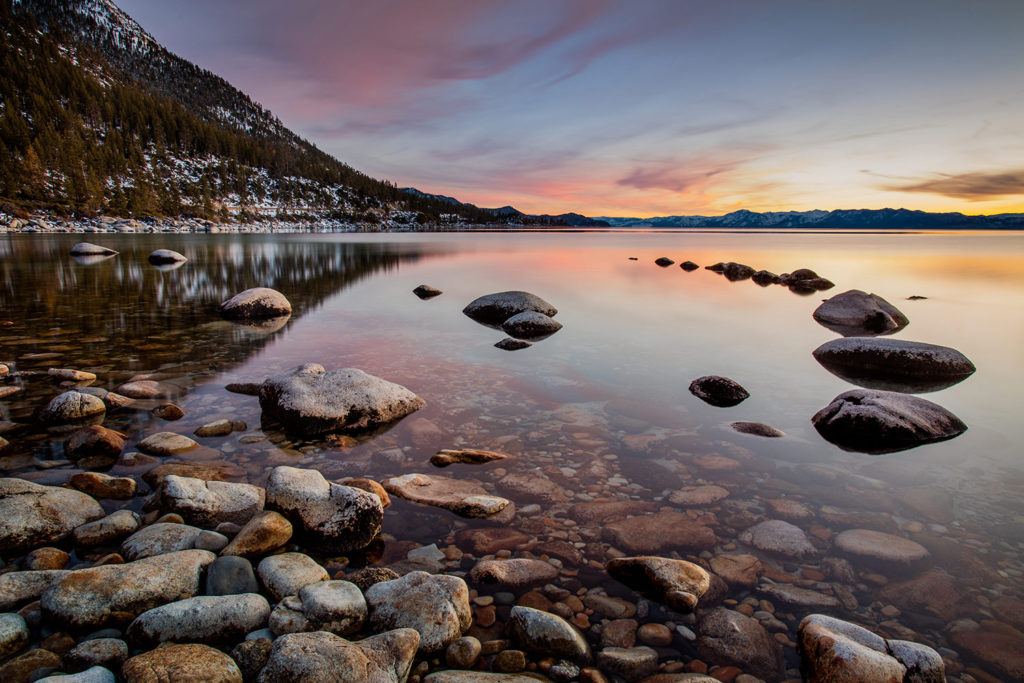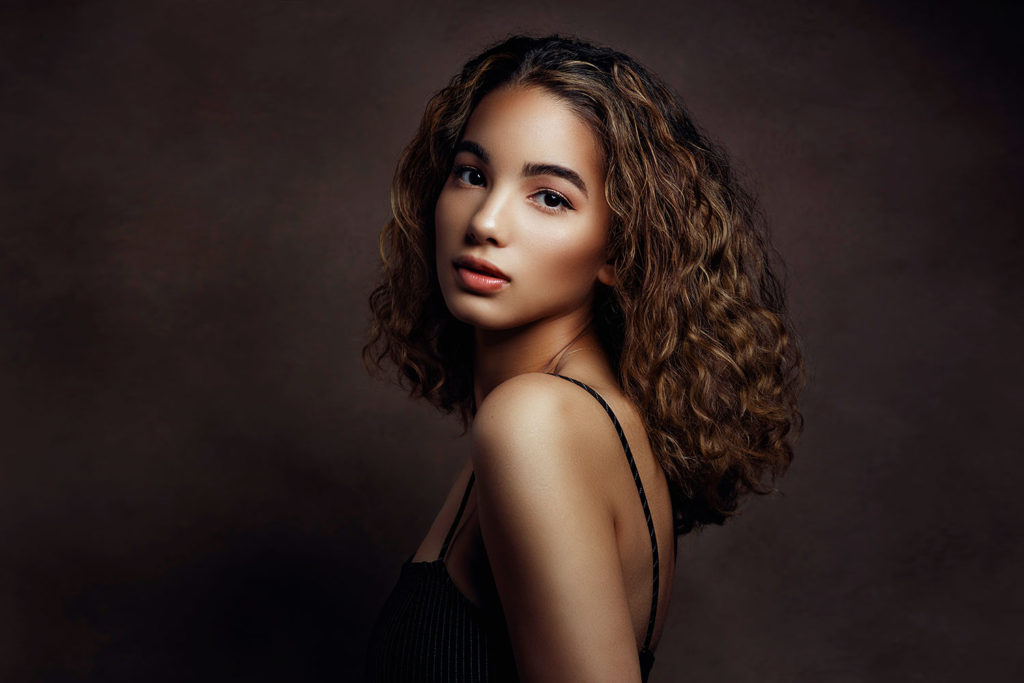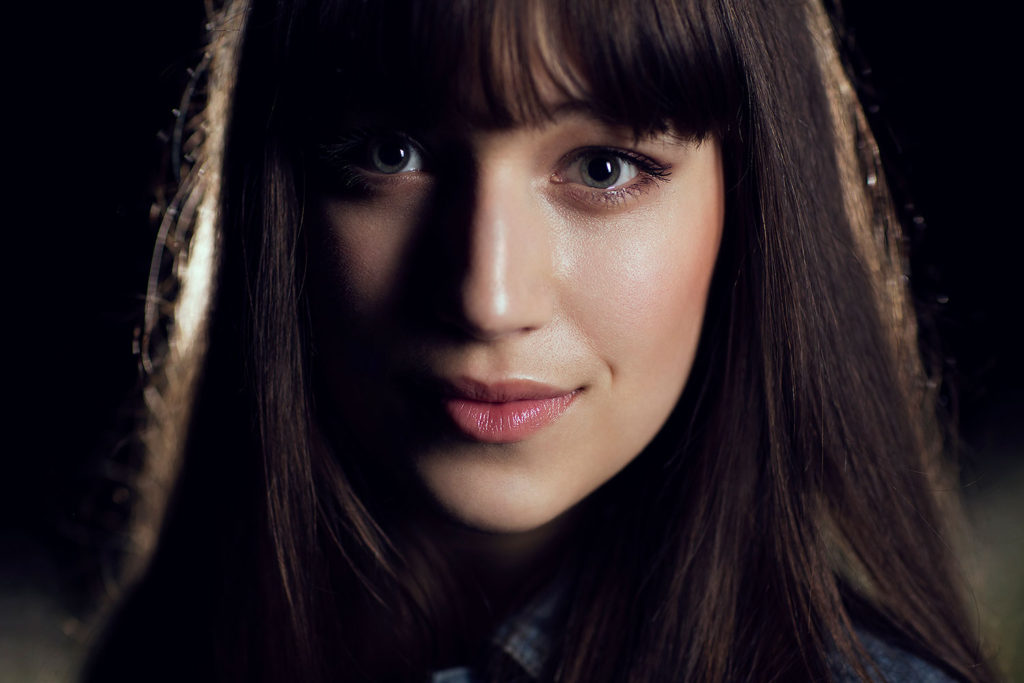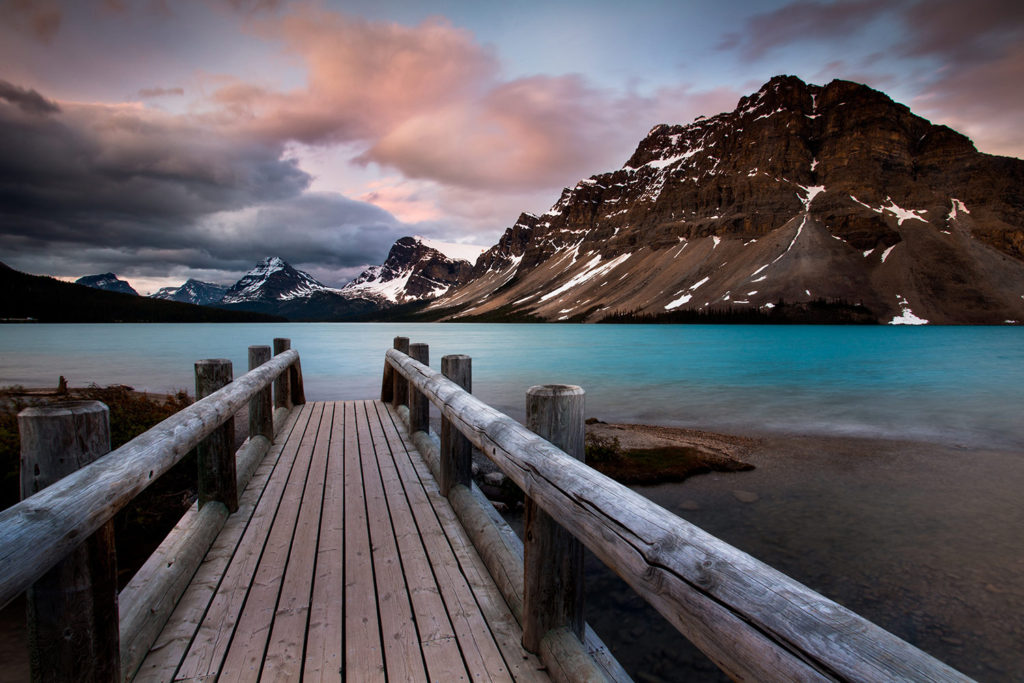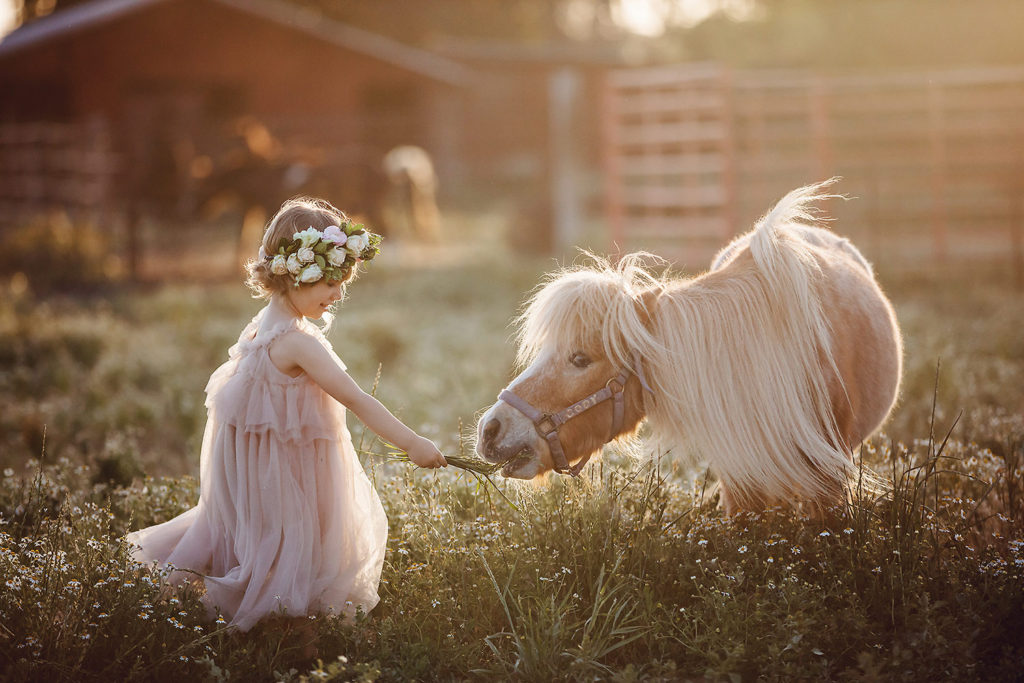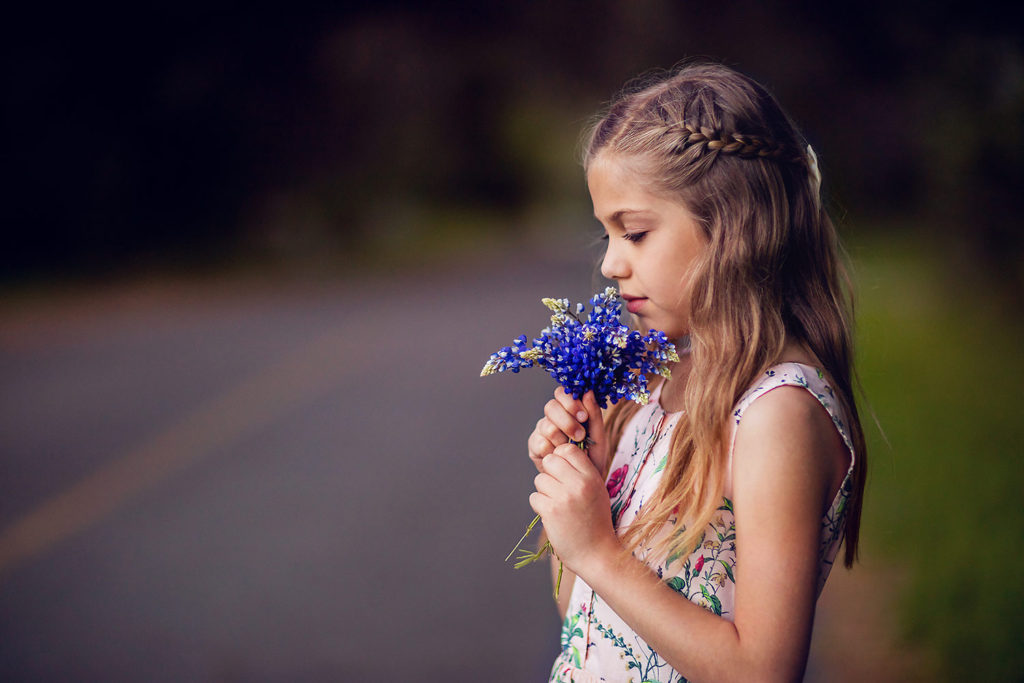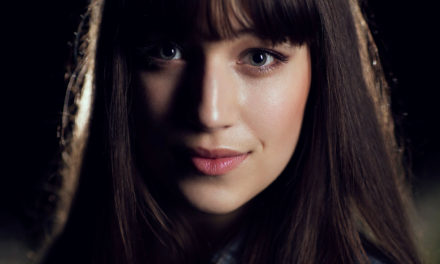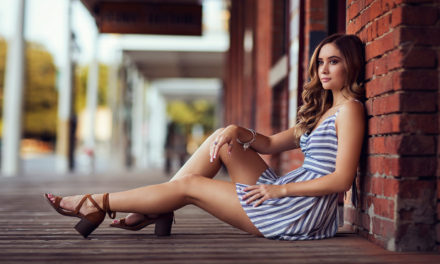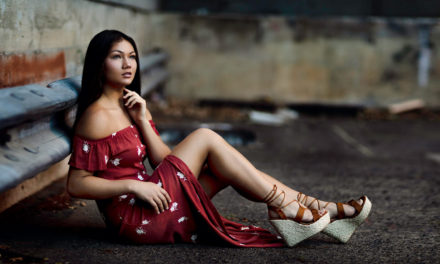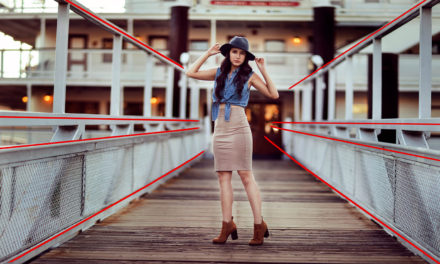Are you deciding between portrait vs. landscape photography career and not sure which genre to go with?
This was me at the beginning of my career. Both photography genres appealed to me in totally different ways.
Portraits and landscapes are very different photography categories, which require a unique approach. When the time comes to choose your photography career, you got to weigh in your interests and all pros and cons before making the big decision.
In this article, I want to share the points you need to consider when deciding between portrait or landscape photography career.
This post may include affiliate links. Please read our disclosure policy. [050]
Equipment that I use: Cameras: Canon EOS R5; Canon EOS R6
Lenses: Canon RF 85/1.2L; Canon RF 28-70mm f/2L; Canon RF 15-35mm F2.8L
Light: Profoto B1 500 | Computer: Apple MacBook Pro | Photo by © Sergey Bidun
WHAT TO CHOOSE: PORTRAIT OR LANDSCAPE PHOTOGRAPHY?
So you really enjoy photographing and want to continue professionally with it. Now the big question arises: which genre of photography to choose?
Each photographer and artist has their own preferences and strengths. You just have to look within yourself and figure out what it is that you enjoy photographing the most.
Let’s dig deeper into the pros and cons of portrait and landscape photography.
WHY CHOOSE PORTRAIT PHOTOGRAPHY
Nowadays, portrait photography is one of the more popular genres among millennials and the younger population.
Many social media platforms such as Facebook, Instagram, and TikTok make excellent areas for artists to display their work to the public.
So why do many photographers choose to shoot portraits? The answer can be simply because they love photographing real people with real emotions.
Many photographers enjoy connecting with their clients on a personal level while capturing creative portraits.
Portrait photography tells so much about the person. You have the opportunity to explore who they are as a person and represent that in an art form that lasts forever.
Portrait photography is in high demand in many different industries, different businesses, and just for personal use. It’s a really great place to start if you are a hobbyist photographer and want to start doing it professionally.
Camera: Canon EOS 5DS R |Lens: Canon EF 50mm f/1.2 L USM Lens
f/3.5, 1/200s, ISO 100 | Photo by © Sergey Bidun
Light: Profoto B1 500 AirTTL System
CHOOSE YOUR PORTRAIT NICHE
Photo sessions can range from glamour female portraits, business headshots, personal branding portraits, fine art portraits, children portraits, and others.
Some photographers choose to specialize in one particular niche, while others attempt to photograph everything. I suggest that you pick a niche that’s most specific to you, one that you are best in.
When working in portraiture, you have to understand that you will be spending a good amount of hours with the client: from the consultation time up to photo delivery. Your communication and people-skills have to be on a high-level.
During the photoshoot, engage with the client to make sure that they are comfortable, and you are comfortable. We are creating an environment that is conducive to not only beautiful portraits but also a really meaningful relationship with the client, which is important in portrait photography.
If you are an extrovert who loves working with people and being in constant communication – portrait photography is for you. You won’t need to travel far away for photoshoots, such as in landscape photography.
Equipment that I use: Cameras: Canon EOS R5; Canon EOS R6
Lenses: Canon RF 85/1.2L; Canon RF 28-70mm f/2L; Canon RF 15-35mm F2.8L
Light: Profoto B1 500 | Computer: Apple MacBook Pro | Photo by © Sergey Bidun
WHY CHOOSE LANDSCAPE PHOTOGRAPHY
If you are more of an introvert and prefer working alone and not deal with people as much – landscape photography is more suitable for you. In nature photography, one of the advantages is not dealing with people on a regular basis.
Many landscape photographers enjoy this type of photography as it allows them to be outdoors while doing something they love. Getting out in nature is one of the biggest perks for landscape photogs.
This is a chance for the photographer to visit hiking trails, beautiful lakes, or national parks. The best time for landscape pictures is during the golden hours and blue hours – before sunrise, or before the sunset. Natural light produces the best type of lighting for landscapes.
Landscape photography gives opportunities for traveling. How many of us hate traveling? I’m pretty sure no one would say that they don’t enjoy traveling the world.
Landscape photography will push you to travel to new destinations and historical spots. You will be motivated to visit new locations in search of capturing amazing masterpieces.
Camera: Canon EOS 5Ds R | Lens: Canon EF17-40mm F/4L USM
Natural Light | f/8, 0.8sec, ISO 50| |Lee ND Filters
Photo by © Sergey Bidun
WAY TO RECHARGE
Being out in nature is very therapeutic for us as humans. Our body and soul needs to rest and recharge to be able to continue functioning in the right way.
What better way to restore your body than an outdoor activity with a camera in hand?
Taking landscape pictures will help you to understand natural light photography much quicker.
If you include a person or an object in your landscape shot, you will see how much the light changes at different times of the day. Learning to see the light is one of the most important rules in photography.
Camera: Canon EOS 5Ds R | Lens: Canon EF17-40mm F/4L USM
Natural Light | f/20, 312sec, ISO 50| |Lee ND Filters
Photo by © Sergey Bidun
LANDSCAPE VS PORTRAIT: WHERE TO BEGIN?
So you’ve decided to pursue photography professionally, but where to begin?
What steps do you need to take to become a professional landscape or portrait photographer?
HOW TO BECOME A LANDSCAPE PHOTOGRAPHER?
The traditional approach in photography education is attending a local college or art school. This is how I started on my photography journey more than fifteen years ago. I attended Sacramento City College to learn photography and how the camera works.
As technology progressed, we now have more accessible ways of studying landscape photography. To improve your skills, you can attend a workshop held by your favorite landscape photographer.
Photography workshop is one of the best and fastest ways to develop or refine landscape photography skills. This is the best way to learn the style of photography that you are pursuing.
If you are on a tight budget, but really want to learn landscape photography, there are many free resources online and on Youtube.
There are quite a few talented photographers who share valuable information and photography tips on their Youtube channels.
You can find courses that will teach you how to use the camera to capture gorgeous landscapes.
Like with any occupation, there’s a long learning curve. It’s important to be patient and consistent at the same time. Be prepared that it might take longer than you are expecting, to master your photography skills.
Work hard, and your efforts will pay off in the way of beautiful landscape masterpieces.
Camera: Canon EOS 5Ds R | Lens: Canon EF17-40mm F/4L USM
Natural Light | f/20, 0.6sec, ISO 50| |Lee ND Filters
Photo by © Sergey Bidun
HOW TO BECOME A PORTRAIT PHOTOGRAPHER?
Portrait photography requires a decent amount of knowledge of camera settings, image composition, proper lighting, model posing, and, most importantly, client communication skills.
Just like with landscape photography, you can attend a local college or an art school to gain your education.
Unfortunately, traditional college courses only offer basic portrait photography education. If you want to go up to the next level, I suggest taking a workshop with your favorite portrait photographer.
I bet you follow a photographer or two who greatly inspire you with their portraiture. Find out if they offer a photography workshop or a masterclass, and try to get in.
This will give you a chance to learn from the professional in-person, ask them questions, and watch them shoot behind the scenes.
The more you practice and shoot, the stronger your photography style will get. You will start developing a signature style that will be uniquely your own.
Portrait photographers differentiate in their approach and style – this is how clients choose who they want to contact in the first place.
Once you develop your style, work on establishing a good quality portrait portfolio. Post your portfolio online, either on a personal website or a social media platform such as Facebook or Instagram.
Posting your work online will give potential clients a chance to find your portrait photos and hire you.
Equipment that I use: Cameras: Canon EOS R5; Canon EOS R6
Lenses: Canon RF 85/1.2L; Canon RF 28-70mm f/2L; Canon RF 15-35mm F2.8L
Light: Profoto B1 500 | Computer: Apple MacBook Pro | Photo by © Sergey Bidun
WHAT EQUIPMENT DO YOU NEED?
What photography equipment do you need for portrait vs. landscape photography career?
You don’t necessarily need the latest mirrorless camera or most expensive lens when you are just starting in photography. It’s important to know your photo gear well and be able to utilize what you have to the fullest potential.
As you advance in a photography career, you will need professional gear to deliver high-quality work and services. Below you will find references to professional quality photography equipment that I recommend.
LANDSCAPE PHOTOGRAPHY EQUIPMENT
There are a few essential pieces of gear that all landscape photographers must have. Whether you are shooting with DSLR or a mirrorless camera, any camera will work as long as it has long shutter speed capabilities.
Make sure you have weather-protective cover for it. Landscape photography often requires shooting at unexpected weather conditions, so protect your gear.
CAMERA
If you are a Canon shooter like me, I suggest that you use a Canon EOS R or Canon 5DS R. These high megapixel cameras will make a great tool for achieving high-resolution landscapes.
For Sony shooters, a good landscape camera would be Sony Alpha a7R IV. Use this mirrorless camera to capture beautiful landscapes that can be printed as wall artwork for any home.
Nikon Z7 FX-Format camera will make a great companion for a Nikon shooter. Pair it up with a right lens, and you are good to go on any landscape photography adventure.
LENS
Go for wide-angle lenses for most dynamic landscape pictures. I suggest getting a wide-angle zoom lens as it’s more convenient than carrying a couple of prime lenses in your camera bag.
A great landscape lens for Canon shooters is Canon EF 16-35mm f/2.8L.
For Nikon shooters, I suggest using Nikon AF-S NIKKOR 16-35mm f/4G.
Sony photographers would benefit from Sony – FE 16-35mm F2.8 GM
TRIPOD
A good-quality solid tripod is a must for every landscape photographer. It’s impossible to take landscape pictures without this essential tool.
I suggest investing in a sturdy tripod that won’t break during your first outdoor photo shoot. If you invest in a good quality tripod, it will serve you tirelessly for many years.
Gitzo GT2532 Mountaineer Series 2 Carbon Fiber Tripod is a wonderful choice for landscape photographers. Pair it with Gitzo GH1382QD Series 1 Center Ball Head, and you are ready to go on a serious landscape photoshoot.
CAMERA BACKPACK
Landscape photographer’s equipment needs a special kind of camera bag. At the very basis, it must be a durable backpack that fits your camera and lenses as well as a tripod.
I suggest you check out the Lowepro ProTactic BP 350 AW II backpack as a camera bag for your landscape photography.
FILTERS
Landscape photography requires gradient filters to produce images with balanced out skies and land tones. You will need Graduated Neutral Density filters and a Polarizer Filter.
I recommend investing in LEE Filters LEE 100 77mm Landscape Pro Kit. I’ve had this kit for the past ten years, and even though I call myself a hobbyist in landscape photography, this kit has been a phenomenal tool for me.
The kit includes three GND filters, Big Stopper ND filter, Little Stopper ND filter, Polarizer, Wide angle adapter ring, and a filter holder.
REMOTE TRIGGER
A remote trigger is a must for landscape photography. You want to eliminate all movement and shake while taking a long-exposure nature shot. Choose a remote trigger that is compatible with your camera model.
Pixel TW-283 E3 Wireless Shutter Release is one example of a remote trigger that you can use.
Camera: Canon EOS 5Ds R | Lens: Canon EF17-40mm F/4L USM
Natural Light | f/13, 30sec, ISO 50| |Lee ND Filters
Photo by © Sergey Bidun
PORTRAIT PHOTOGRAPHY EQUIPMENT
Portrait photography equipment list is slightly different, and it’s really up to the photographer and the type of portraiture he is shooting.
CAMERA
Portraits can be taken with any DSLR or mirrorless camera, but pay attention to the megapixel count. The more megapixel your camera has, the crispier the images will be.
In portrait photography, we are after the quality, and producing pictures that clients can print in large sizes.
My favorite portrait camera at the moment is Canon EOS 5DS R. This 50-megapixel camera allows me to take super high-quality images that look amazing in print.
LENS
Any lens 50mm and up will work great in portrait photography. My favorite lenses for portraits are Canon 50mm 1.2 and Canon 85mm 1.2. Anything wider such as 35mm, can add an unpleasant distortion to your subject’s image.
Occasionally, depending on the location of the session, I also use a telephoto lens Canon 70-200mm 2.8, as it creates a beautiful bokeh in the background.
REFLECTOR
A reflector is one of the photographer’s essential tools for balancing the light. Use your reflector in outdoor photo sessions to add more light to the subject.
Depending on if you are using the silver, gold, or white side of your reflector – that’s the tint of light reflection you will see on your subject.
You can acquire an affordable reflector Neewer 43 inch Light Reflector 5-in-1 and start practicing with this awesome tool.
STROBE/SPEEDLIGHT
If you are taking business headshots, glamour portraits, or other studio portraits, you will need studio lighting equipment.
First, you will need a Strobe or Speedlight to illuminate the studio room. I love working with Profoto B1 Monolight system – it’s simple to use and produces a high-quality light. This strobe light works great with my Canon 5DS R.
MODIFIER
Whenever you are working with a studio light, a modifier needs to be used to soften the light produced by the strobe. Modifiers can be a beauty dish, a softbox, or an umbrella.
My favorite type of modifier for studio portraits is a Profoto beauty dish that softens and diffuses the light beautifully.
TRIGGER
Camera trigger is a tool that you must use when working with studio lights. They enable the flash to fire at the time that you press the shutter.
Choose a trigger that is compatible with your camera and the strobe light that you are using. I use Profoto triggers for my in-studio portrait sessions.
STAND
You will need a stand to put your artificial light and modifier on. I recommend getting a sturdy stand that won’t easily tip over.
Matthews heavy-duty stands are my choice of a very sturdy and multi-use studio stands.
Camera: Canon EOS 5DS R | Lens: Canon EF 85mm f1.2L II USM
f/7.1, 1/125s, ISO 100 | Photo by © Sergey Bidun
Light: Profoto B1 500 AirTTL System
HOW TO MAKE MONEY: PORTRAIT VS LANDSCAPE
Photography isn’t just about taking photos. It is also about running your own small business and nowadays having a social audience as well.
It’s important to make sure that photography is right for you and that you are passionate about it. This is the very first step since you are going to be spending hours upon hours putting time into your business to help it grow and to be able to make it a full-time job.
HOW PORTRAIT PHOTOGRAPHERS MAKE MONEY
You can’t just take good pictures and expect people to start emailing you to do paid shoots.
Take advantage of social media when you are in the process of building and strengthening your portfolio. Flickr and 500px are great platforms where photographers share their work and can receive feedback and constructive criticism for their work.
PORTFOLIO
In our digital era, having an online portfolio is a must. An online portfolio helps to show your work online to many potential clients. You can’t expect a client if you don’t have anything to show from all the months and years that you’ve spent shooting.
A lot of people use Instagram as their online portfolio, but I believe that having your own website is a much more powerful way to show your work. A website really defines who you are as a photographer and shows the client what you are available to be booked for.
Upload the strongest work on your website, and when a client lands on it, they will know exactly what they can expect from you. If you’ve got a portrait session that they really want, they will be able to get in contact with you to book their session.
Websites are a good point of contact for potential clients and bookings. A strong, high-quality website will add credibility to you as a professional portrait photographer.
MARKETING
The first client is the hardest to get, believe me, we’ve all been through this stage.
So how do you book that first client? You must market yourself and your portrait photography work if you want to start receiving bookings.
Some of the best ways of marketing are social media platforms such as Facebook and Instagram. You can post your images and include captions about photoshoot availability or any promotions.
Word of mouth is also a great way of advertising. After you have done a few photoshoots for your relatives or friends, they will most likely start recommending you as a portrait photographer.
PRICING
When you are ready to start accepting paid clients, make sure you have your pricing and portrait collections set up. You need to be confident in your pricing and deliver work that is worth the amount that you are charging your clients.
The first client is the hardest to get, but once you start getting more and more bookings, you will get into a rhythm of things.
You will gradually develop a way of streamlining your work and delivering high-quality images to your clients.
PRINTED PRODUCTS
Portrait photographers can also offer printed products to their clients. Custom photo albums and wall prints are a great way for portrait photographers to earn extra money.
WORKSHOPS
Experienced portrait photographers can offer workshops to educate amateur photographers. Photography workshops are great for meeting other photographers and teaching new skills to photographers that really look up to you.
Some photographers get to a level when they stop shooting as much and concentrate more on traveling to other states and countries and teaching their photography style to beginner photographers. Workshops are a great way to earn money as a portrait photographer.
Equipment that I use: Cameras: Canon EOS R5; Canon EOS R6
Lenses: Canon RF 85/1.2L; Canon RF 28-70mm f/2L; Canon RF 15-35mm F2.8L
Light: Profoto B1 500 | Computer: Apple MacBook Pro | Photo by © Sergey Bidun
HOW LANDSCAPE PHOTOGRAPHERS MAKE MONEY
In my opinion, it’s harder for landscape photographers to earn a living by just photographing nature.
At first, you might have to do different genres of photography, to be able to support yourself financially with photography.
Let’s go through some of the most common ways landscape photographers make money from their art.
SELL PRINTS
Selling prints is one of the best ways to start earning money from landscape photography. But before you can get people interested in your photographs, you must present your work to your audience somehow.
The most convenient way to showcase your work is through an online gallery. Create a website with a rich portfolio of your landscape pictures, and add a feature that allows people to buy prints or digital images directly from your website.
When you have a store option on your site, start promoting your work on social media platforms such as Facebook or Instagram. The stronger you can build your online presence, the better off you will be in selling your landscape prints.
There are ways of selling physical prints in-person as well. Art galleries and expo shows are some of the ways you can sell landscape prints to the people.
WORKSHOPS
Once you have more experience and have amateur photographers asking for tips and suggestions on landscape photography – it might be time to start teaching photography workshops. Workshops are an excellent way for photographers to learn and improve their skills.
If you have a unique style of photography and love teaching, this is a great opportunity to earn extra money as a landscape photographer.
STOCK PHOTOGRAPHY
Stock photography sales are a great way of passive income for landscape photographers. You will need to set up an account with one or more stock sites and upload your work there. When a client is searching for specific images and chooses your photo, you will get a direct payment for this image.
Here are some stock photography websites that you can check out: www.istockphoto.com, www.dreamstime.com, and more.
DIRECT COMMISSION
Direct commissions are probably the most fun way of earning money with landscape photography. This is a chance for you to travel to a unique location while doing what you love.
You get approached by a brand or a tourist agency to do a specific project for them. They might pay for your travel expenses, but if they don’t – include that fee into the quote.
Depending on the size of the project and how many images they need, you will need to come up with a quote. Make sure you include your travel and camera expenses.
You can earn money with direct commissions, but remember that if you want to get noticed and contacted, you must be visible or searchable online. Market yourself wherever you are, you never know where the next job opportunity may come from.
Camera: Canon EOS 5Ds R | Lens: Canon EF17-40mm F/4L USM
Natural Light | f/13, 30sec, ISO 50| |Lee ND Filters
Photo by © Sergey Bidun
PORTRAIT VS LANDSCAPE PROS AND CONS
PORTRAIT PHOTOGRAPHY
PROS – You will get to work with people a lot while creating beautiful portraits.
You won’t need to travel far if you are taking portraits in your studio.
No need to spend hours photoshooting outdoors in unpredictable weather conditions.
Satisfied clients will refer their relatives and friends towards you.
CONS – You need to have excellent client communication skills.
You are more likely to have to work under pressure if you work with people on a regular basis, and will have to deal with difficult clients from time to time.
There is a need to get the portrait photoshoot done in a limited amount of time, unlike in landscape photography.
Fewer opportunities to travel out of state to visit a new and interesting location. You would have to plan a vacation for that.
Camera: Canon EOS 5DS R | Lens: Canon EF70-200mm f/2.8L IS II USM
Back Sun Light | f/2.8, 1/5000s, ISO 1000 | Photo by © Sergey Bidun
LANDSCAPE PHOTOGRAPHY
PROS – With a landscape photography career, you will get to see the world and travel to many historical locations.
You will regularly be outdoors hiking to new photoshoot locations.
This is a good way of staying active and reenergizing yourself.
You won’t need to deal with people or a regular basis.
CONS – You need to be physically fit enough to handle long hikes under hard weather conditions.
Your photography gear is at a bigger risk of getting damaged or wet.
It’s harder to find ways to sell your work and earn money with landscape photography.
It’s a competitive genre of photography, with less demand.
Camera: Canon EOS 5DS R |Lens: Canon EF 85mm f1.2L II USM
Sky Natural Light | f/1.2, 1/200s, ISO 800 | Photo by © Sergey Bidun
CONCLUSION
Portrait vs. Landscape photography career? Now it’s up to you to decide which genre is more desirable for you.
We’ve discussed the reasons why some photographers choose portrait photography, and others prefer landscape photography.
The article went over which steps you need to take and what equipment you need to become a professional portrait or landscape photographer.
Portrait and landscape photography career allows you to earn money with your camera, but not without a lot of investment of time and effort.
I hope this post will shine some light on the art of photography, and help you decide which genre is closer to your heart. Portrait vs. landscape – it’s your decision now.

